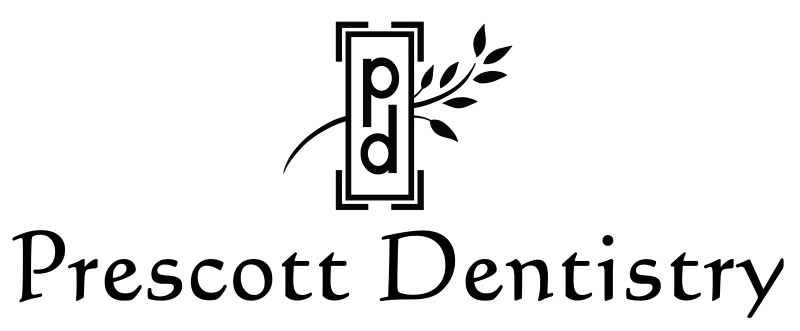
19 Sep What Is Gingivitis, and What Causes It?
Television ads about toothpaste often mention keeping your teeth clean in order to avoid gingivitis. So what IS gingivitis? At Prescott Dentistry, we’re quite familiar with this word and with the negative impact of its meaning. Let’s take a few minutes to clear up any confusion on what gingivitis is and what causes it. And in the process, we’ll make a few suggestions about how to avoid this unpleasant and unwanted oral visitor.
What Is Gingivitis?
Gingivitis is the first stage of gum disease. And unfortunately, it’s rather common. It starts along the gum line, and makes your gums red and tender or sore. They might bleed a little when you floss. Our dentists can treat gingivitis, but in order to knock out the disease, treatment should occur at the first sign of any issues.
Most often, the early signs of gum disease are detected during dental cleanings and checkups. So don’t neglect your twice-yearly visits to the dentist! By avoiding those visits you’re putting yourself at a higher risk for gum disease and other dental problems.
In fact, poor dental hygiene at home and skipping dental visits are the most common reasons for developing gingivitis. In addition, poor diets or diets that are high in sugar and acidic foods can greatly increase your chances of gum disease.
The most common signs of gum disease include:
- Gums that bleed easily when brushing teeth or flossing
- Dark red or swollen gums
- Tender gums
- Receding gum line, meaning that your gums are slowly covering less and less of the teeth
- Bad breath
If you notice any of the above symptoms, we encourage you to schedule a dental checkup and cleaning right away. As we mentioned before, gingivitis can be treated if caught early enough. However if it is allowed to progress, it can lead to an infection that spreads into the jawbone and causes tooth loss and other difficulties.
Get a Dental Cleaning and Checkup in Prescott
At Prescott Dentistry, our staff will give you the best care possible. Our goal is to help you treat and prevent gingivitis. Along with practicing good oral hygiene, which includes brushing, flossing, cleaning your tongue, and using mouthwash to further rinse away the bacteria, your regular dental visits to our office can go a long way toward keeping your teeth and gums in good shape.
And remember, we also offer holistic preventive care options that can further protect your teeth and gums. Hopefully, any confusion on what gingivitis is and what causes it has been cleared up, and you’ve now got a healthy understanding of how to help your teeth and gums stay strong for a lifetime of use!



